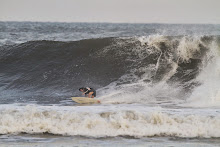
So I’ve been taking this natural sensitization story on the road for a couple of years now. Most of my science friends (professors and postdocs mostly) like to study natural behavior. They are very happy with my effort to drag the study of learning and memory into a natural context. But they can be a pain in the ass, too.
“But you are starving these poor lobsters, Billy. How natural is that??”
“Well, see, it’s like this… Before humans fished them down to the nubbins, there were lots and lots of lobsters. Everywhere. Big ones. They ate up everything around, and there just wasn’t a whole lot of food. Lobsters got really hungry. Sea hares started to look pretty good. So, lobsters started to eat sea hares.”
“So, what is your evidence of this “just so” story, Dr. Bill?”
“Uh, well, shoot. Do I have to have evidence?”
Yes you do. That’s what science is about.
One day a professor friend of mine named Matt Grober said, “Hey why don’t you see if lobsters at the Wrigley Marine Science Center on Catalina Island eat sea hares. They’ve been ferociously protected from any and all fisherman for 25 years. Maybe you’ve got a prehuman microcosm there.” He showed me a cool photo of a cave with lots of big lobsters.
Ok. Let’s do that! So I took 6 or 8 of my Chapman students to Catalina on Siwash. Grandad’s boat. We brought a half dozen sea hares out with us, and moored nearby the Wrigley center. I sent in some students (one of whom, John, is with me now) armed with sea hares to present to the lobsters. I didn’t really think it would work.
When they came back, their eyes were popping! The lobsters ate the sea hares right up!!
So, wow. That’s amazing. Are you sure? Wow. Maybe the preserve did that.
That was last summer. More than a year has past, and finally I get to come back to this cool phenomenon. Science brought me here.


No comments:
Post a Comment